Kingdom Animalia Family Cyrenidae Scientific name Corbicula fluminea Phylum Mollusca Order Veneroida | Superfamily Cyrenoidea Genus Corbicula Rank Species Higher classification Corbicula Subclass Heterodonta | |
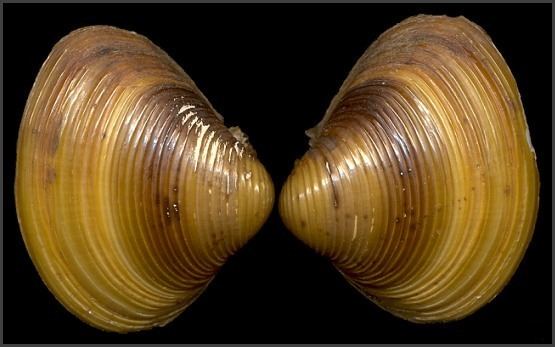 | ||
Similar Corbicula, Zebra mussel, Dreissena, Cyrenidae, Unionidae | ||
Corbicula fluminea burying into the sand
Corbicula fluminea is a species of freshwater clam, an aquatic bivalve mollusk in the family Cyrenidae. This species is often confused with Corbicula fluminalis due to the two species' similar colour and texture.
Contents
- Corbicula fluminea burying into the sand
- Corbicula fluminea
- As a native species
- As an invasive species
- Taxonomy
- References
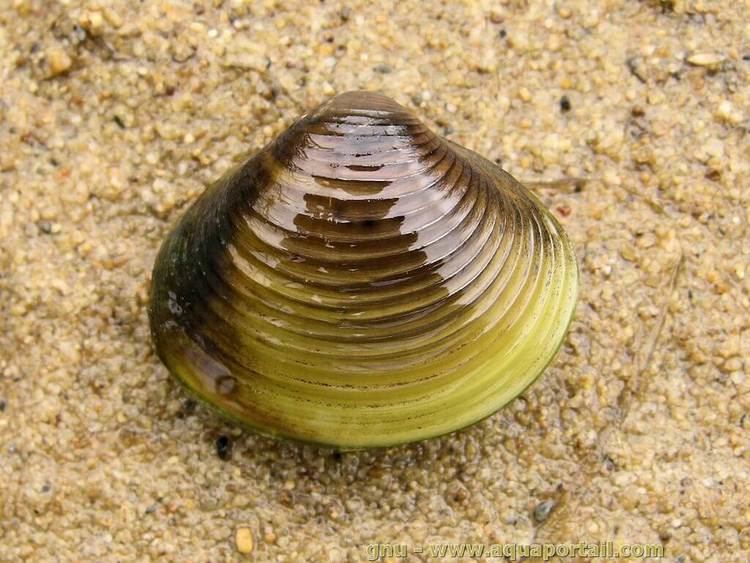
The species is regarded as having originated somewhere in Eastern Asia, leading to the common names of Asian clam or Asiatic clam. In the aquarium and koi pond trade, it is often called golden clam or golden freshwater clam. In Southeast Asia, it is known as the prosperity clam or good luck clam.
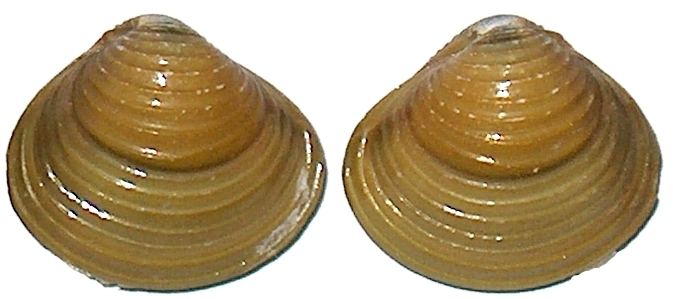
The species has been introduced into many parts of the world, including South America, North America and Europe.
Right after reaching maturity, these clams produce eggs, followed by sperm. Even later, they produce eggs and sperm simultaneously. They can self-fertilize, and release up to 2,000 juveniles per day, and more than 100,000 in a lifetime. Juveniles are only 1 mm long when discharged, and take one to four years to reach maturity. At this time, they are about 1 cm long. Adults can reach a length of about 5 cm.
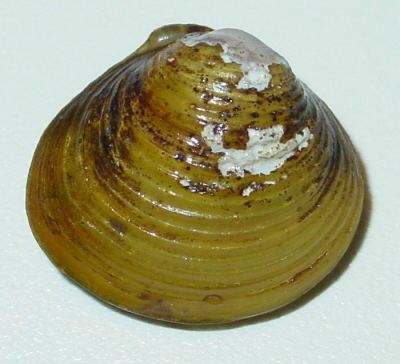
The outside of the shell is normally yellow-green with concentric rings. The color can flake, leaving white spots. The shells are lightly purple on the inside.
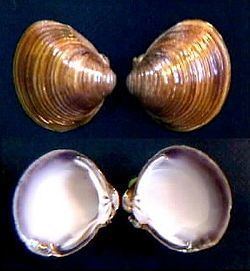
They feed primarily on phytoplankton (algae), which they filter from the sandy or muddy bottoms of streams, lakes, or canals. According to the United States Geological Survey, C. fluminea is likely to continue to expand its North American range until it reaches its lower temperature tolerance.
The primary economic and social impact of the invasion of C. fluminea has been billions of dollars in costs associated with clogged water intake pipes of power plants, among others. Ecologically, C. fluminea contributes to declines and replacement of highly vulnerable, already threatened native clams. [1].
Corbicula fluminea
As a native species
This clam originally occurs in freshwater environments of Eastern Asia, including Russia, Thailand, the Philippines, China, Taiwan, Korea, and Japan: C. fluminea also occurs naturally in freshwater environments of Africa.
As an invasive species
C. fluminea was probably brought to North America at the latest in 1924, by Asian immigrants who used the clams as a food source. It is abundant in the Albemarle region of North Carolina, as well as other areas along the east coast. In South America it was probably introduced in the 1960s into the Río de La Plata, and then spread through most of the continent.
Nonindigenous distributions of C. fluminea include:
Taxonomy
Two species are present in introduced populations, C. fluminea and C. fluminalis. However, the two species are often mixed together. The names themselves are sometimes confused in the literature (e.g. by being called "Corbicula fluminata"). Care needs to be taken to properly distinguish the two species.
The ratio of width and height in C. fluminea is on average 1.1. In C. fluminalis it is smaller (0.97); still, there is much variation and considerable overlap in shape. Most easily, they can be distinguished by the amount of ribs on the shell; C. fluminea has 7 to 14 ribs per cm, C. fluminalis 13 to 28. This character is already clearly recognizable (albeit only by direct comparison) in very small (5 mm diameter) specimens. In addition, when viewed from the side (looking at the opening between the shells), C. fluminalis is rounder, almost heart-shaped, while C. fluminea has a slightly flatter shape like a teardrop with a notched broad end. Small specimens of C. fluminalis are almost spherical, while those of C. fluminea are decidedly flattened. All these differences except the rib number are a consequence of C. fluminalis having a markedly more swollen, pointed and protruding umbo.
